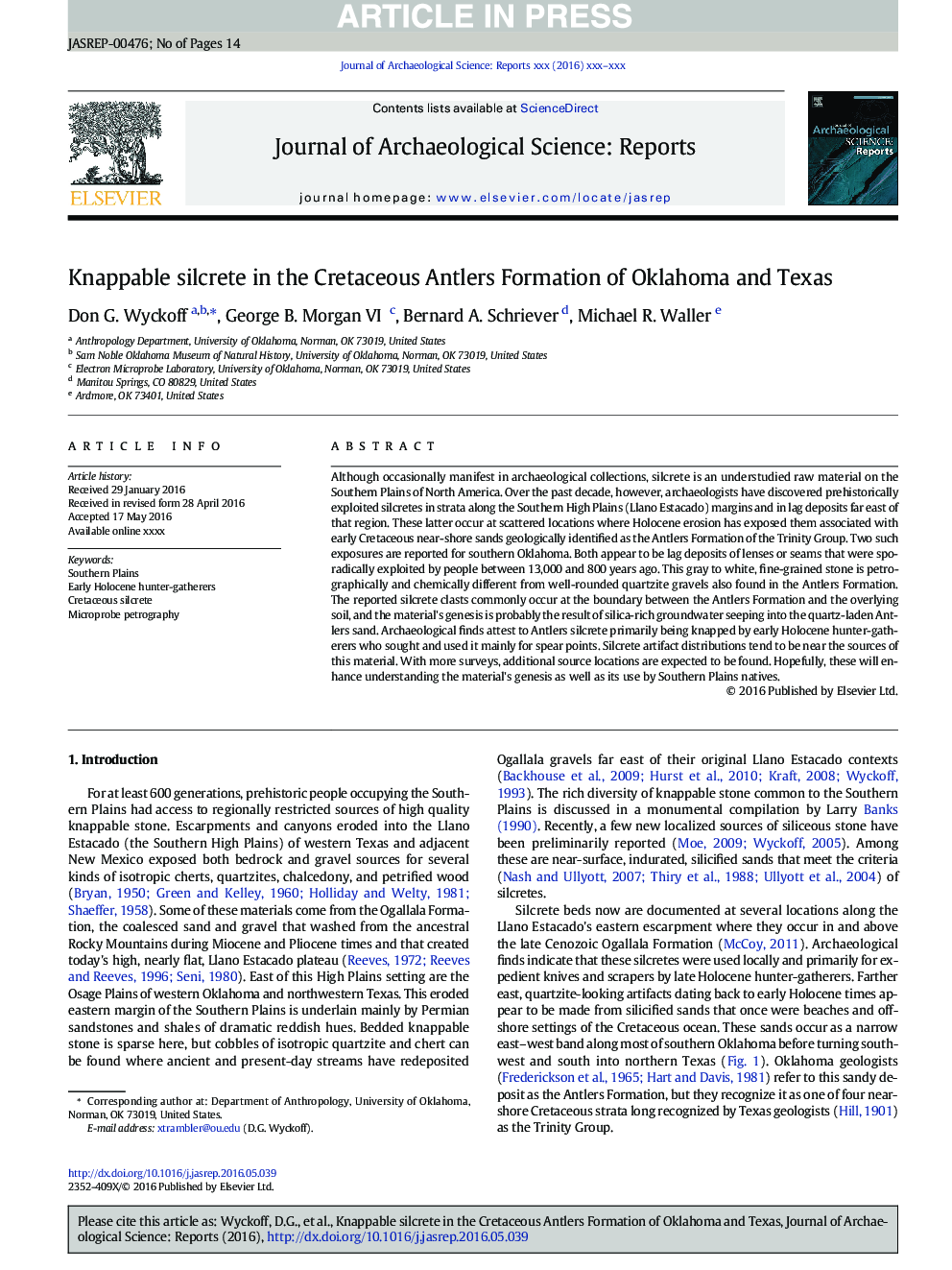| Article ID | Journal | Published Year | Pages | File Type |
|---|---|---|---|---|
| 7445116 | Journal of Archaeological Science: Reports | 2017 | 14 Pages |
Abstract
Although occasionally manifest in archaeological collections, silcrete is an understudied raw material on the Southern Plains of North America. Over the past decade, however, archaeologists have discovered prehistorically exploited silcretes in strata along the Southern High Plains (Llano Estacado) margins and in lag deposits far east of that region. These latter occur at scattered locations where Holocene erosion has exposed them associated with early Cretaceous near-shore sands geologically identified as the Antlers Formation of the Trinity Group. Two such exposures are reported for southern Oklahoma. Both appear to be lag deposits of lenses or seams that were sporadically exploited by people between 13,000 and 800Â years ago. This gray to white, fine-grained stone is petrographically and chemically different from well-rounded quartzite gravels also found in the Antlers Formation. The reported silcrete clasts commonly occur at the boundary between the Antlers Formation and the overlying soil, and the material's genesis is probably the result of silica-rich groundwater seeping into the quartz-laden Antlers sand. Archaeological finds attest to Antlers silcrete primarily being knapped by early Holocene hunter-gatherers who sought and used it mainly for spear points. Silcrete artifact distributions tend to be near the sources of this material. With more surveys, additional source locations are expected to be found. Hopefully, these will enhance understanding the material's genesis as well as its use by Southern Plains natives.
Keywords
Related Topics
Social Sciences and Humanities
Arts and Humanities
History
Authors
Don G. Wyckoff, George B. VI, Bernard A. Schriever, Michael R. Waller,
